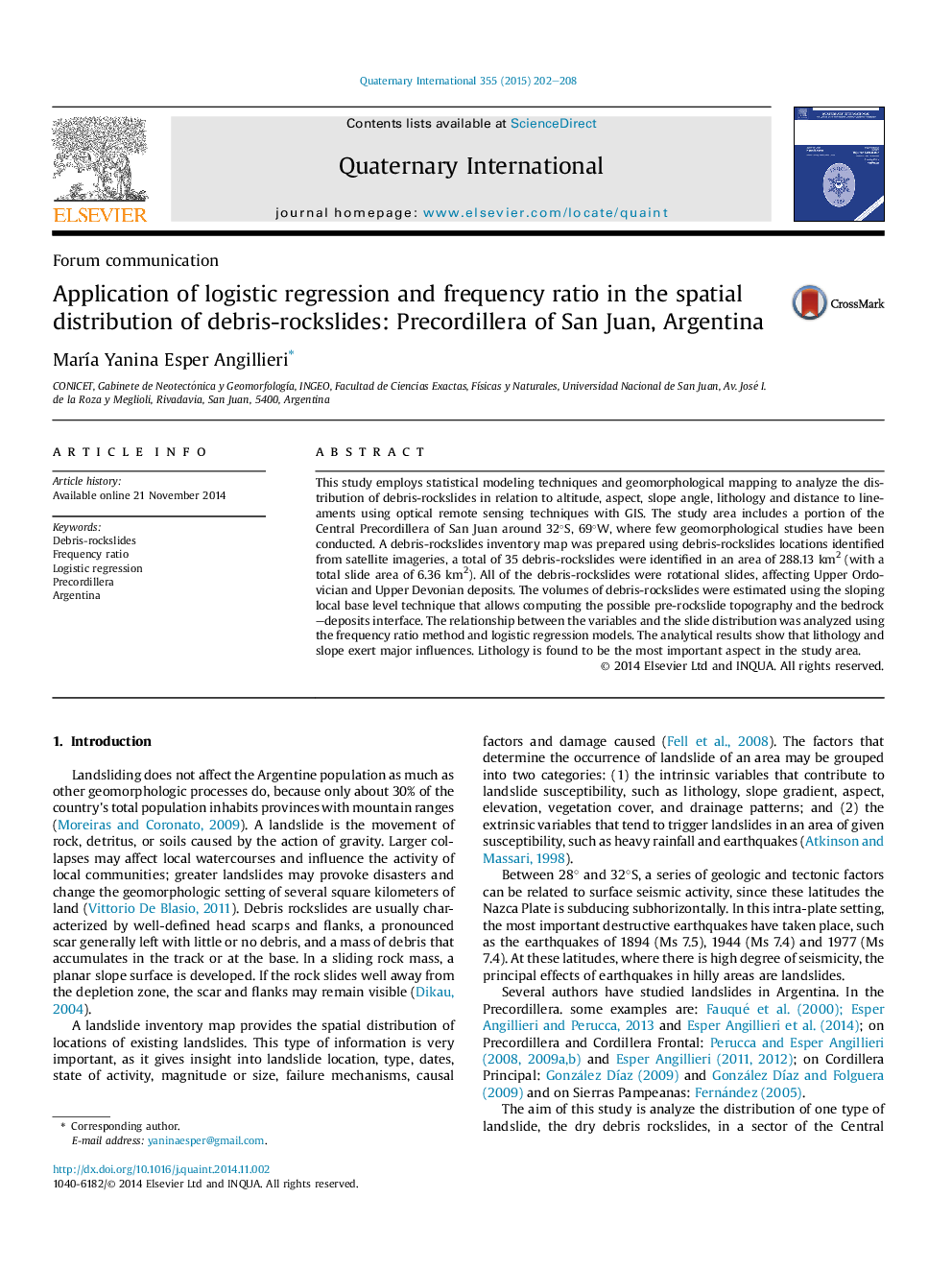| Article ID | Journal | Published Year | Pages | File Type |
|---|---|---|---|---|
| 1041074 | Quaternary International | 2015 | 7 Pages |
This study employs statistical modeling techniques and geomorphological mapping to analyze the distribution of debris-rockslides in relation to altitude, aspect, slope angle, lithology and distance to lineaments using optical remote sensing techniques with GIS. The study area includes a portion of the Central Precordillera of San Juan around 32°S, 69°W, where few geomorphological studies have been conducted. A debris-rockslides inventory map was prepared using debris-rockslides locations identified from satellite imageries, a total of 35 debris-rockslides were identified in an area of 288.13 km2 (with a total slide area of 6.36 km2). All of the debris-rockslides were rotational slides, affecting Upper Ordovician and Upper Devonian deposits. The volumes of debris-rockslides were estimated using the sloping local base level technique that allows computing the possible pre-rockslide topography and the bedrock–deposits interface. The relationship between the variables and the slide distribution was analyzed using the frequency ratio method and logistic regression models. The analytical results show that lithology and slope exert major influences. Lithology is found to be the most important aspect in the study area.
